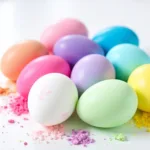When you’re passionate about DIY and home decor, there’s nothing quite as satisfying as transforming a piece of fabric with your own two hands. But sometimes, the vibrant color you envisioned turns out a tad too bold for your taste. Whether it’s a tablecloth that clashes with your dining set or a newly dyed shirt screaming for subtlety, knowing how to tone down fabric color can be a game-changer.
Don’t fret if your fabric adventures have taken a turn towards the overly vivid. You don’t have to resign yourself to a world of muted hues just yet. This guide is here to equip you with simple yet effective methods to subdue those loud colors and achieve the perfect shade for your project.
Understanding the Fabric Color Wheel
Before diving into the techniques, let’s brush up on some color theory basics. The color wheel is your best friend when it comes to understanding how colors interact.
- Complementary Colors: These colors sit opposite each other on the color wheel (think blue and orange or red and green). When combined, they neutralize each other, resulting in a less intense, more muted shade.
- Analogous Colors: These colors are neighbors on the color wheel (like blue, blue-green, and green). While they create harmony, using a darker analogous color can subtly tone down a brighter one.
Methods to Tone Down Fabric Color
1. The Power of the Wash
Sometimes, all it takes is a good wash to soften a fabric’s color intensity.
- White Vinegar Soak: Add one cup of white vinegar to a basin or tub filled with cold water. Submerge the fabric and let it soak for at least 30 minutes before laundering as usual. Vinegar acts as a natural color remover, gently lifting excess dye without harming the fabric.
- Salt Soak: Similar to vinegar, salt can help to set and slightly fade colors. Dissolve half a cup of salt in cold water and soak the fabric for an hour before washing.
- Repeat Washing: For mildly bright colors, multiple washes with a gentle detergent can gradually fade the fabric to your liking.
2. Tea Staining for a Vintage Look
If you’re aiming for an antique or muted effect, tea staining is a fantastic option.
- Brew a Strong Tea: Steep several black tea bags in hot water. The more tea bags you use, the darker the stain will be.
- Submerge and Soak: Once the tea has cooled, submerge your fabric and let it soak for several hours or even overnight, depending on your desired intensity.
- Rinse and Dry: Rinse the fabric thoroughly with cold water and hang it to dry away from direct sunlight.
3. Overdyeing with Complementary Colors
Remember the color wheel magic? This method uses complementary colors to neutralize and tone down your fabric.
- Choose the Right Dye: Select a fabric dye in a color that is complementary to the existing color of your fabric. For example, if your fabric is bright orange, you would choose a blue dye.
- Follow Dye Instructions: Prepare the dye bath according to the instructions on the dye package.
- Dye and Rinse: Submerge the fabric in the dye bath and allow it to soak for the recommended time. Rinse thoroughly with cold water until the water runs clear.
4. Utilizing Color Remover Products
For more drastic color changes or when dealing with stubborn dyes, color remover products can be lifesavers.
- Choose the Right Product: Color removers come in different strengths, so select one that is appropriate for the type of fabric and dye you are working with.
- Safety First: Always work in a well-ventilated area and wear gloves to protect your skin when using chemical color removers.
- Follow Product Instructions: Carefully follow the instructions on the product packaging for the best results.
Tips for Success
- Fabric Type Matters: Natural fibers like cotton and linen tend to release color more easily than synthetics.
- Test First: Always test your chosen method on a small, inconspicuous area of the fabric before treating the entire piece.
- Patience is Key: Toning down fabric color often requires a bit of patience. Don’t be discouraged if you don’t achieve your desired shade immediately. Multiple attempts or a combination of methods may be necessary.
Conclusion
Mastering the art of how to tone down fabric color opens up a world of possibilities in your creative endeavors. Whether you’re refining a bold hue or seeking that perfect vintage look, these techniques empower you to achieve stunning results. Remember, experimentation is key! Don’t be afraid to play with different methods and find what works best for your fabric and desired outcome.
FAQs
Can I use bleach to tone down fabric color?
While bleach is a powerful color remover, it’s not recommended for toning down colors. Bleach can damage fibers and create uneven fading, especially on delicate fabrics.
What if my fabric becomes too light after toning down the color?
You can always try overdyeing the fabric with a similar color to restore some of the lost intensity.
Can I tone down the color of only a specific part of the fabric?
Yes, you can use tie-dye techniques or fabric markers to apply color remover or dye to specific areas of the fabric.
Is it possible to completely remove color from fabric?
Complete color removal can be challenging, especially with certain dyes. However, using a strong color remover and following the instructions carefully can significantly lighten or remove most dyes.
What are some natural alternatives to chemical color removers?
Lemon juice, baking soda, and hydrogen peroxide are natural alternatives that can help to fade fabric color. However, they may not be as effective as commercial color removers.
Need help finding the perfect color for your next project? Contact us!
Phone: 0373298888
Email: [email protected]
Address: 86 Cầu Giấy, Hà Nội.
Our team is available 24/7 to assist you.
